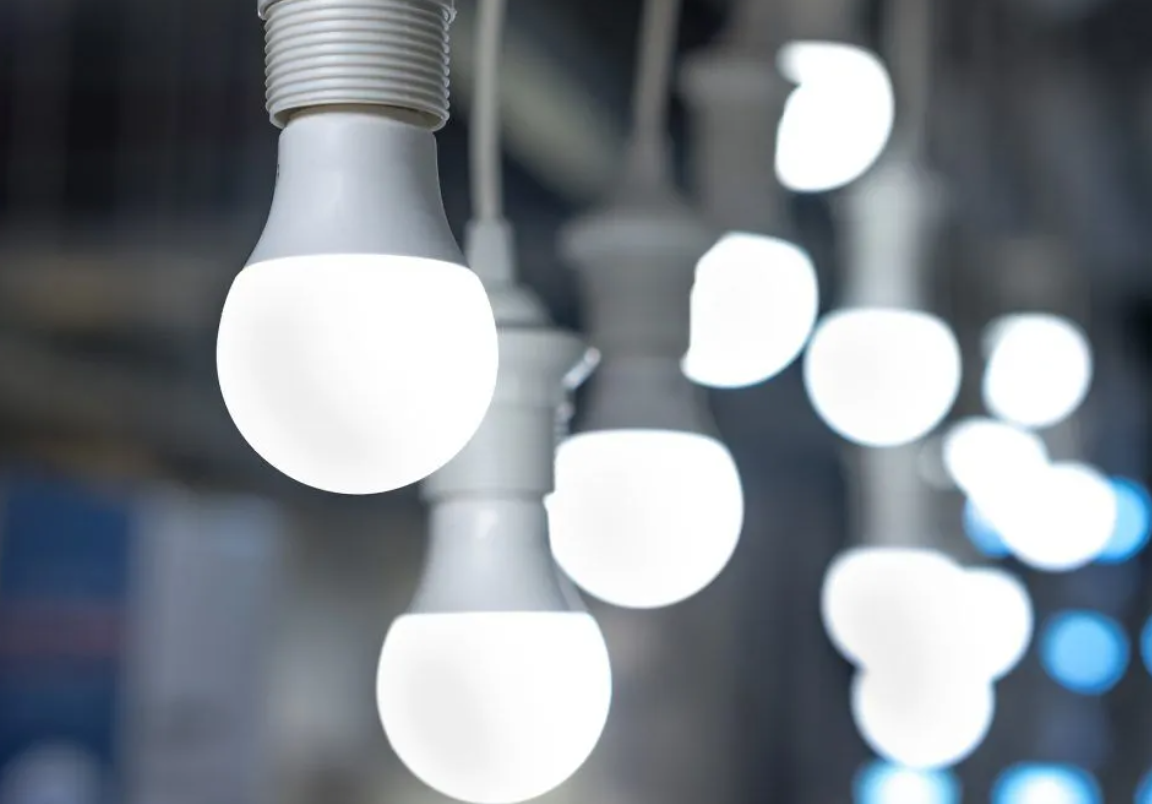LED stands for Light Emitting Diode. It is a semiconductor component that transforms electrical energy into light through the process of electroluminescence.
Types of LED
- Standard LEDs: Basic LEDs used in indicators, displays, and signaling.
- High-Power LEDs: Brighter and used in floodlights, automotive headlights, and streetlights.
- RGB LEDs: Red, Green, and Blue LEDs that can produce a range of colours.
- COB LEDs (Chip on Board): Multiple LED chips mounted on a single circuit board for uniform light distribution.
- SMD LEDs (Surface Mounted Diodes): Compact and efficient for general-purpose lighting.
- Filament LEDs: Designed to resemble traditional incandescent bulbs with modern LED technology.
How Does LED Work?
- Semiconductor Material: LEDs use a semiconductor made of materials like gallium arsenide or gallium nitride.
- Electroluminescence: When electrical current flows through the semiconductor, it excites electrons, causing them to release energy in the form of photons (light).
- Phosphor Coating: For white light, blue LEDs are coated with phosphor materials to convert the blue light into white light.
LED Applications
- Residential Lighting: General lighting, ceiling lights, table lamps.
- Commercial Lighting: Offices, retail stores, and large venues.
- Street Lighting: Energy-efficient public illumination.
- Automotive Lighting: Headlights, brake lights, interior lights.
- Displays: TVs, computer monitors, and digital billboards.
- Signage: Outdoor and indoor advertising displays.
- Medical Equipment: Surgical lights, diagnostic tools.
LED Advantages
- Energy Efficiency: Uses up to 80% less energy than incandescent bulbs.
- Long Lifespan: Can last 25,000 to 50,000 hours or more.
- Durability: Resists shocks, vibrations, and extreme temperatures.
- Eco-Friendly: Free of toxic materials like mercury.
- Instant Lighting: Lights up immediately without warm-up time.
- Dimmable: Many LEDs can be adjusted for brightness.
- Design Flexibility: Available in various shapes, colors, and sizes.
LED Disadvantages
- Higher Initial Cost: More expensive upfront compared to traditional lighting.
- Heat Sensitivity: Requires proper heat dissipation to maintain performance.
- Color Accuracy: Lower-quality LEDs may have poor color rendering.
- Blue Light Emission: Excessive blue light exposure may cause discomfort or disrupt sleep.
- Compatibility Issues: Some older fixtures or dimmers may not work well with LEDs.






